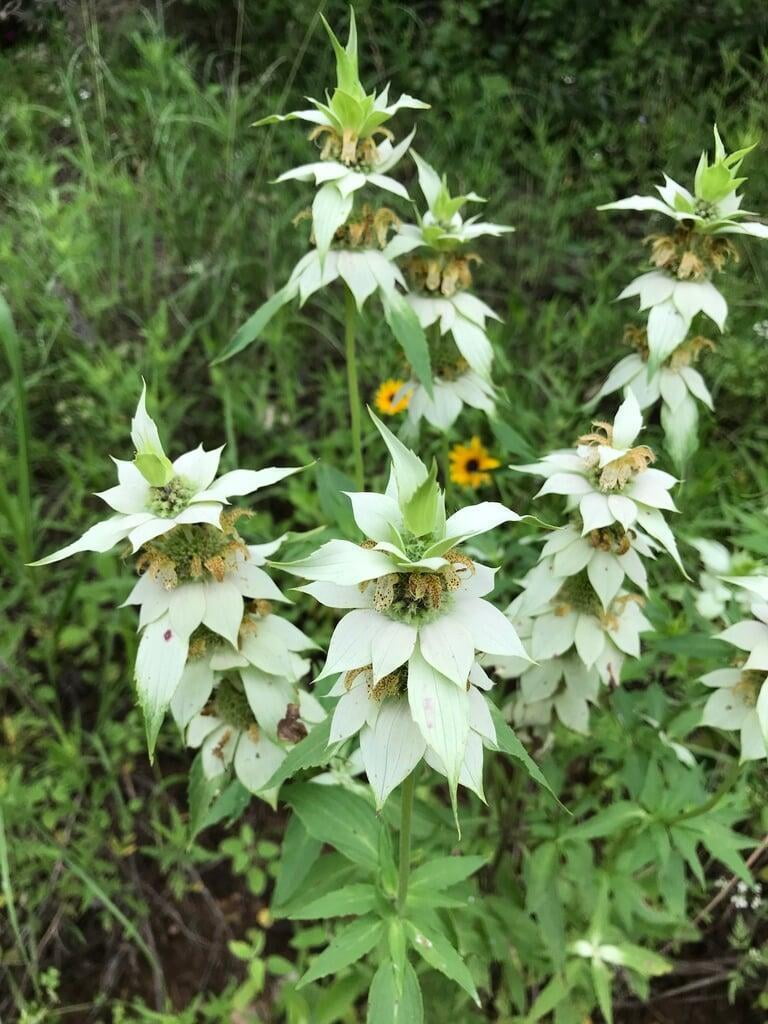Monarda punctata
Horsemint Description:
Monarda punctata, commonly known as spotted beebalm, horsemint, or dotted horsemint, is a North American native herbaceous perennial plant that belongs to the mint family (Lamiaceae). The plant is known for its showy, yellow to lavender-pink flowers and its fragrant foliage.
The plant grows up to 2-3 feet tall and forms clumps of square stems that are covered with fine hairs. The lance-shaped leaves are arranged in pairs on the stem and have a strong, mint-like scent when crushed. The flowers appear in mid- to late summer and are held in dense, spherical clusters at the top of the stem. Each flower is tubular in shape, with a spotted lower lip and a frilly, two-lobed upper lip, and is about 1 inch (2.5 cm) long.
Monarda punctata is a hardy plant that can grow in a wide range of soil types and light conditions. It prefers well-drained soils and can tolerate dry conditions and full sun. The plant is native to most of North America, ranging from Canada to the southern United States.
The plant has a long history of medicinal use by Native Americans and early settlers. The leaves and flowers contain essential oils that are used to treat a variety of ailments, including headaches, colds, and digestive issues. The plant is also a popular choice for pollinator gardens, as it attracts bees, butterflies, and other beneficial insects. In addition, the fragrant foliage makes it an attractive addition to herb gardens or perennial borders.
Native Range:
Horsemint is fount throughout the central and Eastern United States. In Minnesota, Horsemint is found most commonly in the Southeastern and central portions of the state.
Standard Plant Information:
Plant Height: 2' - 3'
Bloom Time: July - September
Preferred Habitat: Does well in sun and often found in dry prairies and fields.
Sowing:
For most homeowners, the best option is to scatter seed on the ground by hand broadcasting at a minimum of 16-64 pls ounces per acre. For even coverage, we recommend that you broadcast seed in perpendicular rows across the site to ensure even coverage.
You’ll want to broadcast any grass seed first, which will get raked into the soil lightly. Next, it is ideal to mulch the area lightly with either a clean (no seed) straw or preferably with our native Little Bluestem straw, sold at our retail garden centers. After a light mulching is complete, now it’s time to broadcast your native wildflower seeds, which should not be raked into the soil. A good rain or watering is sufficient to cover the seed.
Planting:
Simply dig a hole in the soil slightly larger than the plant’s roots. Ensure that the soil line of the plant is maintained during the transfer (i.e. the plant should be at the same level with the ground as it was in the pot). Pack any loose dirt back around the plant and make sure you water it well the same day to ensure it has the best chance of survival.










